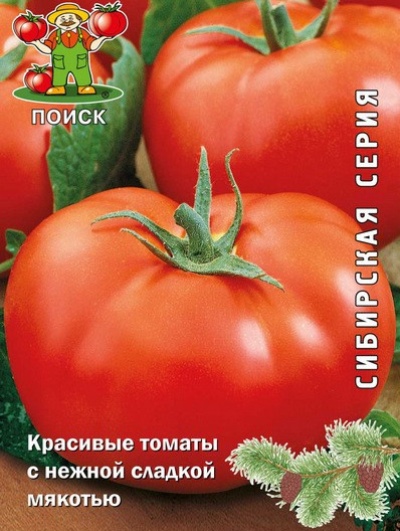
- Authors: Shott Z.I., Gilev M.A.
- Year of approval: 2007
- Category: grade
- Growth type: indeterminate
- Appointment: fresh consumption
- Ripening period: mid-season
- Ripening time, days: 110-115
- Growing conditions: for open ground, for film greenhouses
- Bush height, cm: up to 200
- Leaves: large dark green
Nothing beats the taste of a juicy ripe tomato straight from the garden. These delicious fruits are quite easy to grow. Altai red tomatoes can grow in a variety of conditions, with the exception of extreme cold weather.
Breeding history
The authors of this variety of tomatoes are considered Z. I. Shott, M. A. Gilev. The tomato was allowed to be used in 2007.
Description of the variety
By the type of growth, the Altai red variety is classified as indeterminate. The bushes reach a height of 200 cm. The foliage is formed in a large, dark green shade. The inflorescence is simple, and the peduncle is articulated.
The main qualities of the fruit
Tomatoes of the described variety are consumed fresh, and also excellent juices are obtained from them. Fruits that are not yet ripe will be green with a darker spot near the stem. When ripe, they are bright red. Weigh from 250 grams to half a kilogram. Tomatoes grow in a flat-round, ribbed shape. More than 6 tomatoes can form in one cluster. The pulp is tender, fleshy and firm.
Taste characteristics
The fruit of the Altai red tomato tastes sweet and pleasant.
Ripening and fruiting
In terms of ripening, this variety belongs to the mid-season. Tomatoes ripen in 110-115 days.
Yield
The yield level is 10 kg / sq. m.
The timing of planting seedlings and planting in the ground
Sowing seeds for seedlings is done in mid-March, while grown plants can be transferred to open ground in mid-May.

Growing tomato seedlings is an extremely important process, because it largely depends on whether the gardener can harvest at all. All aspects must be taken into account, from seedbed preparation to planting in the ground.
Landing scheme
The scheme according to which you need to plant is 50x40 cm. This is taking into account 3-4 plants per 1 square meter.

Growing and care
Altai red grows well both in the open field and in the greenhouse. It must be tied up, since the fruits grow large and can simply break the trunk. The formation of bushes and the timely removal of stepchildren will be mandatory. To get a high yield, pinch or cut off vegetative shoots that appear at the junction of leaves and stems. They look like small bushes sticking out at a 45 ° angle.
Altai red is watered in the early morning so that the plants have enough moisture to survive the hot day. After planting, the first few days generously moisten the soil. Then the amount of watering can be reduced.To help your tomatoes cope with drought, you can put some flat stones next to each plant. Stones prevent water from evaporating from the soil.
As a top dressing, you can use a little bone meal, which is placed in the planting pit during planting. Feed the plants from the side using liquid seaweed or fish emulsion. This is done every 2 weeks from the moment the Altai red bushes have reached several centimeters in diameter. Top dressing is continued every 3-4 weeks until frost.
Avoid quick release fertilizers and formulations with a high nitrogen content. Large amounts of nitrogen will result in lush foliage but few flowers and no fruit. If the grower has added organic fertilizers to the soil during planting, additional fertilizing is usually not required. If not, then after planting the seedlings, it is necessary to spread a thin layer of garden compost or compost manure at a distance of 30 cm from the stems. After that, the bushes should be watered and mulch put on them.




A plant needs different micronutrients at each stage of growth. All fertilizers can be divided into two groups: mineral and organic. Folk remedies are often used: iodine, yeast, bird droppings, eggshells.
It is important to observe the rate and period of feeding. This also applies to folk remedies and organic fertilizers.
Disease and pest resistance
Tomatoes are susceptible to insect pests. To avoid problems, it is necessary to check the area under the leaves, fruits and the surrounding soil daily. A good stream of water helps to get rid of many pests, including aphids. Larger insects go away after using soapy water.
Insecticidal soap helps in pest control well. It fights well against aphids and even spider mites. Experts also advise using garden oils or water-diluted sprays. Spraying with neem oil blocks the insect's lungs.
If the grower cannot cope with the problem with gentle methods, then it is better to use insecticides such as Sevin. In this case, you need to know that such a remedy also kills beneficial insects, including bees.
The best remedies for disease are sulfur-based fungicides. You can use copper sulfate. Spraying is done one week after planting the seedlings. The procedure is repeated every 2 weeks. When the first signs of problems appear, such remedies should be used immediately, until the disease has had time to multiply and move on to healthy shoots.


Resistant to adverse weather conditions
This variety is considered frost-resistant, so small frosts are not particularly scary for him. Young seedlings in greenhouses should grow at a temperature of +25 degrees.
Growing regions
Altai red is actively grown in many regions of our country. This is not only the North Caucasus, but also the Central District, Volgo-Vyatka, Ural. A good harvest is obtained in the Central Black Earth Region, the North-Western regions of the country and in the Far East.

























































































